- TOP
- Landscape
Overview
National Treasure
Landscape
- Museum No.
- AK227
Showing 1-6 of 7
| Title | Landscape |
|---|---|
| Designation | National Treasure |
| Artist | |
| Category | Painting(A), Buddhist Painting, Others |
| Country | Japan |
| Period | Heian Late |
| Century | 11th |
| Year | |
| Quantity | |
| Materials | |
| Dimensions | (Each) Height 146.3cm (Each) Width 42.7cm Height 146.3cm |
| Inscription by | |
| Signature/Seals Etc | |
| Donor |
This object may be one within a set or the title of a set. To see all objects in the set, perform a Category Search by the Museum Number below, entering numerals only before the hyphen.

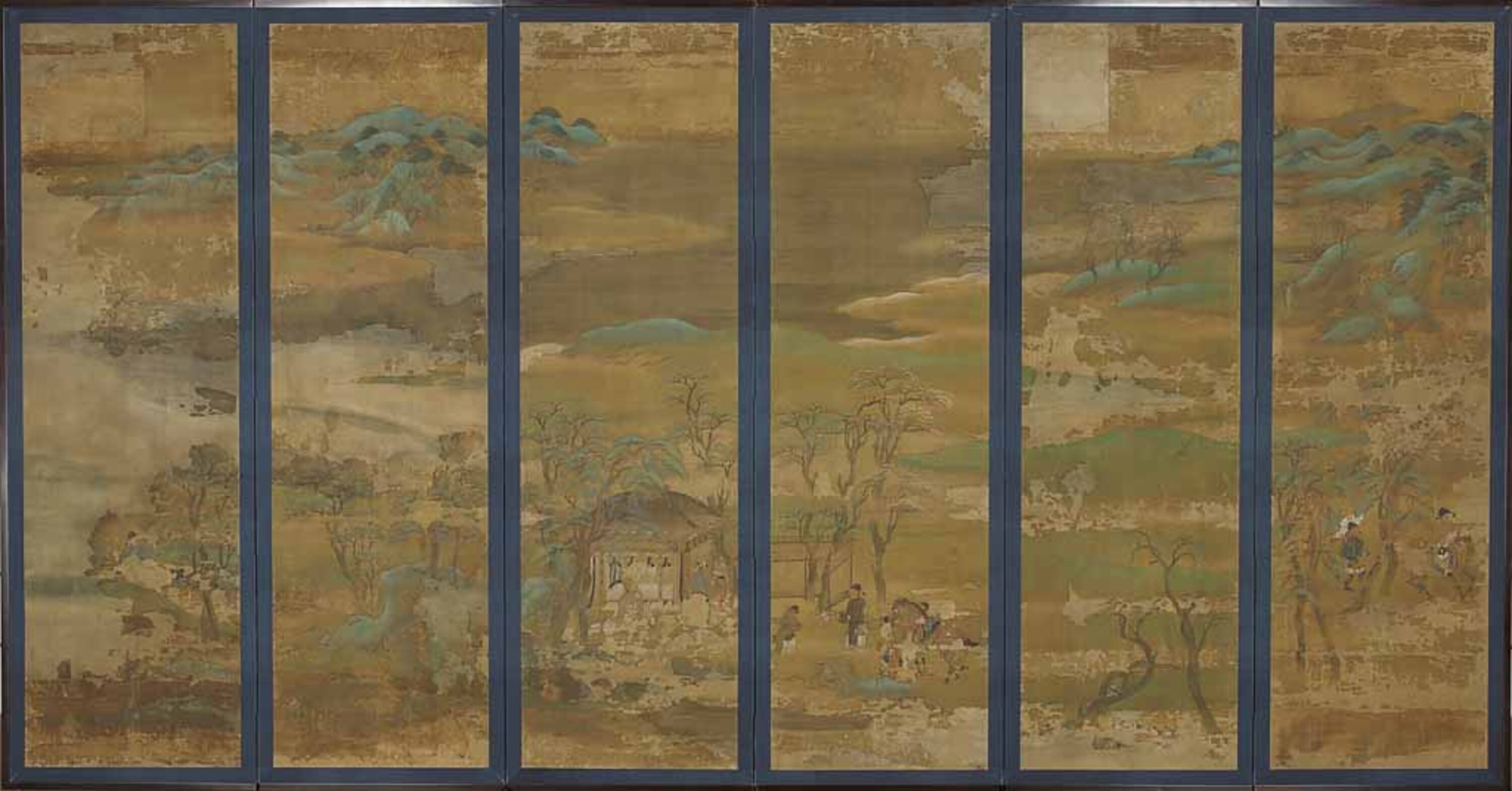








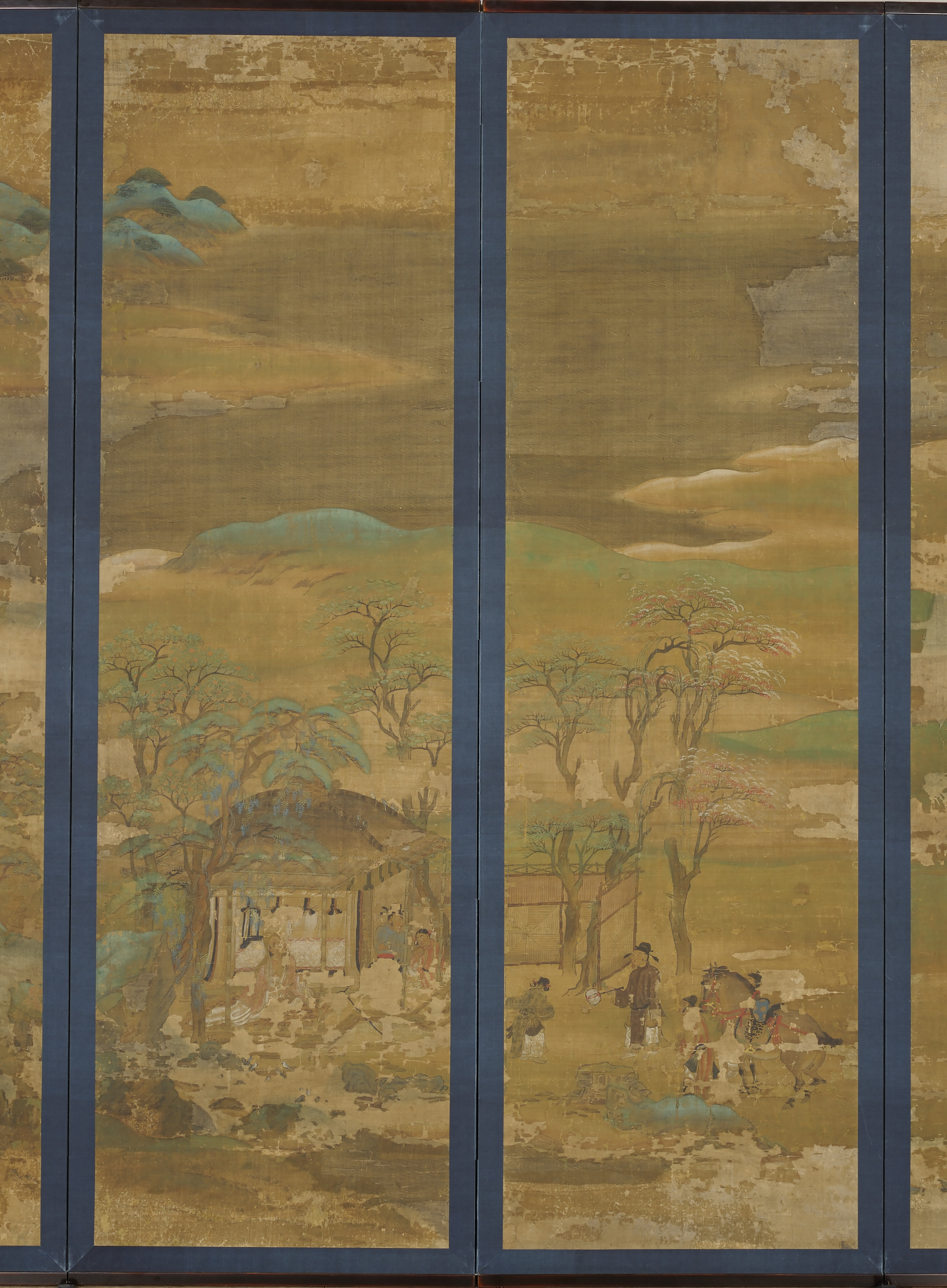

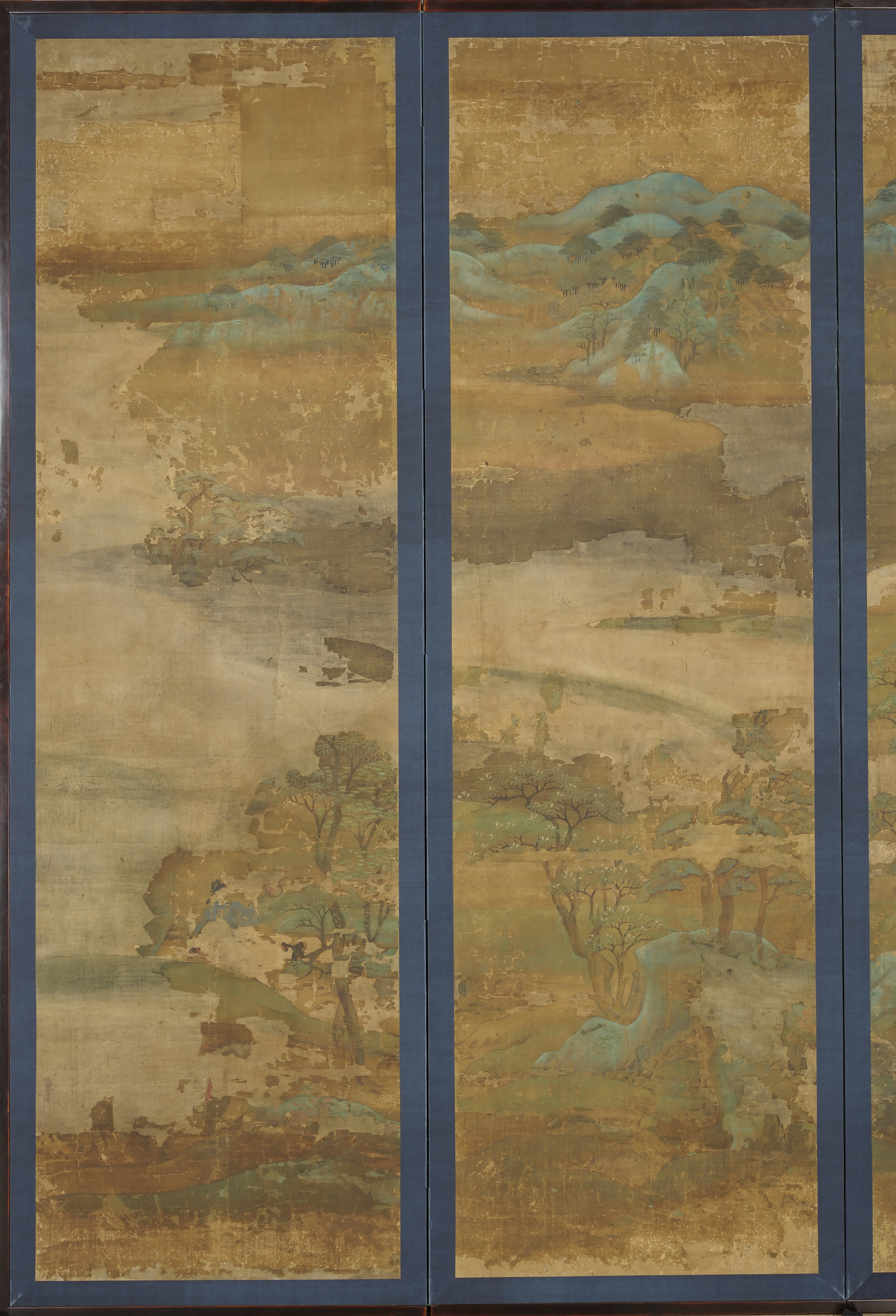
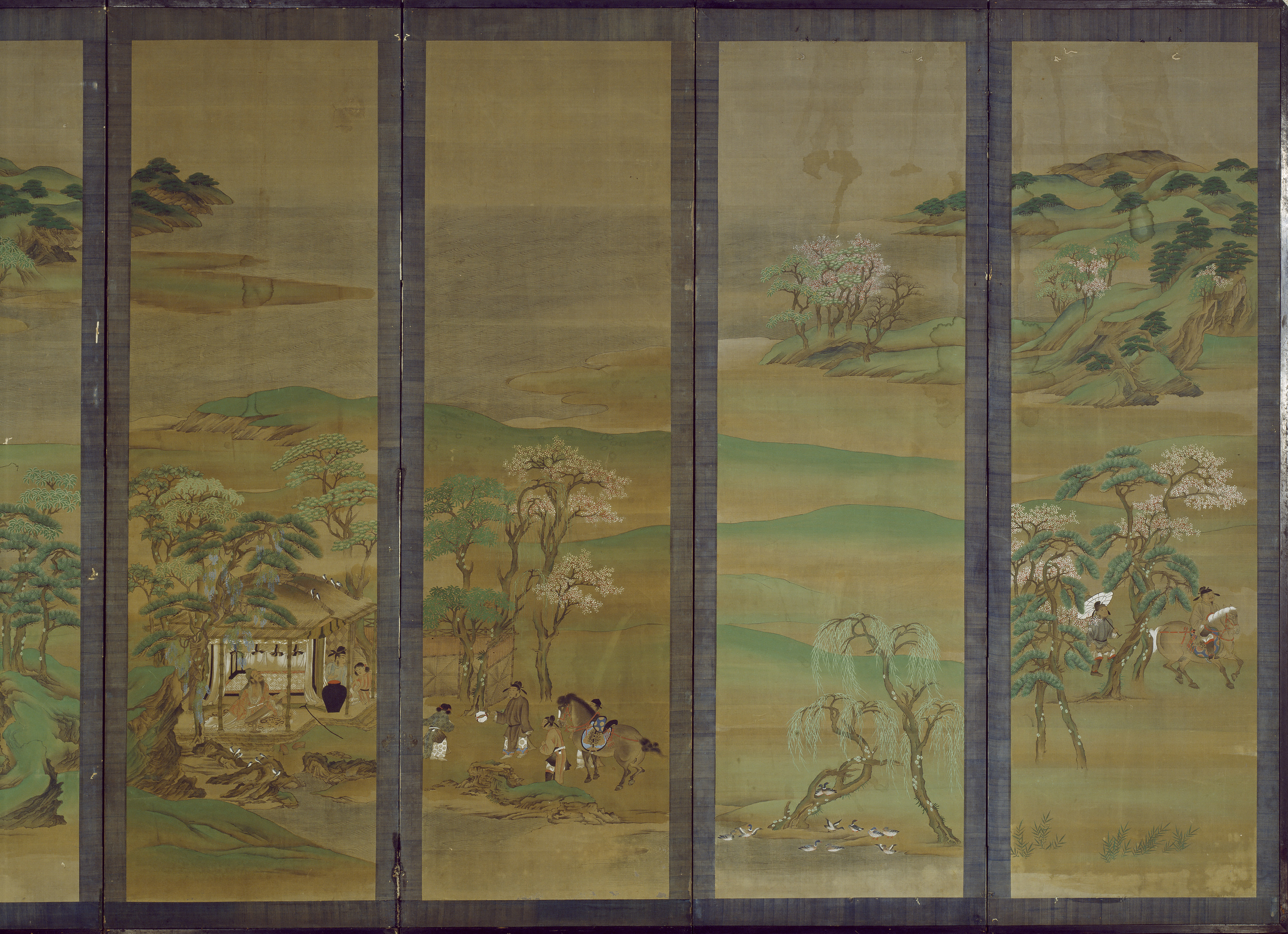
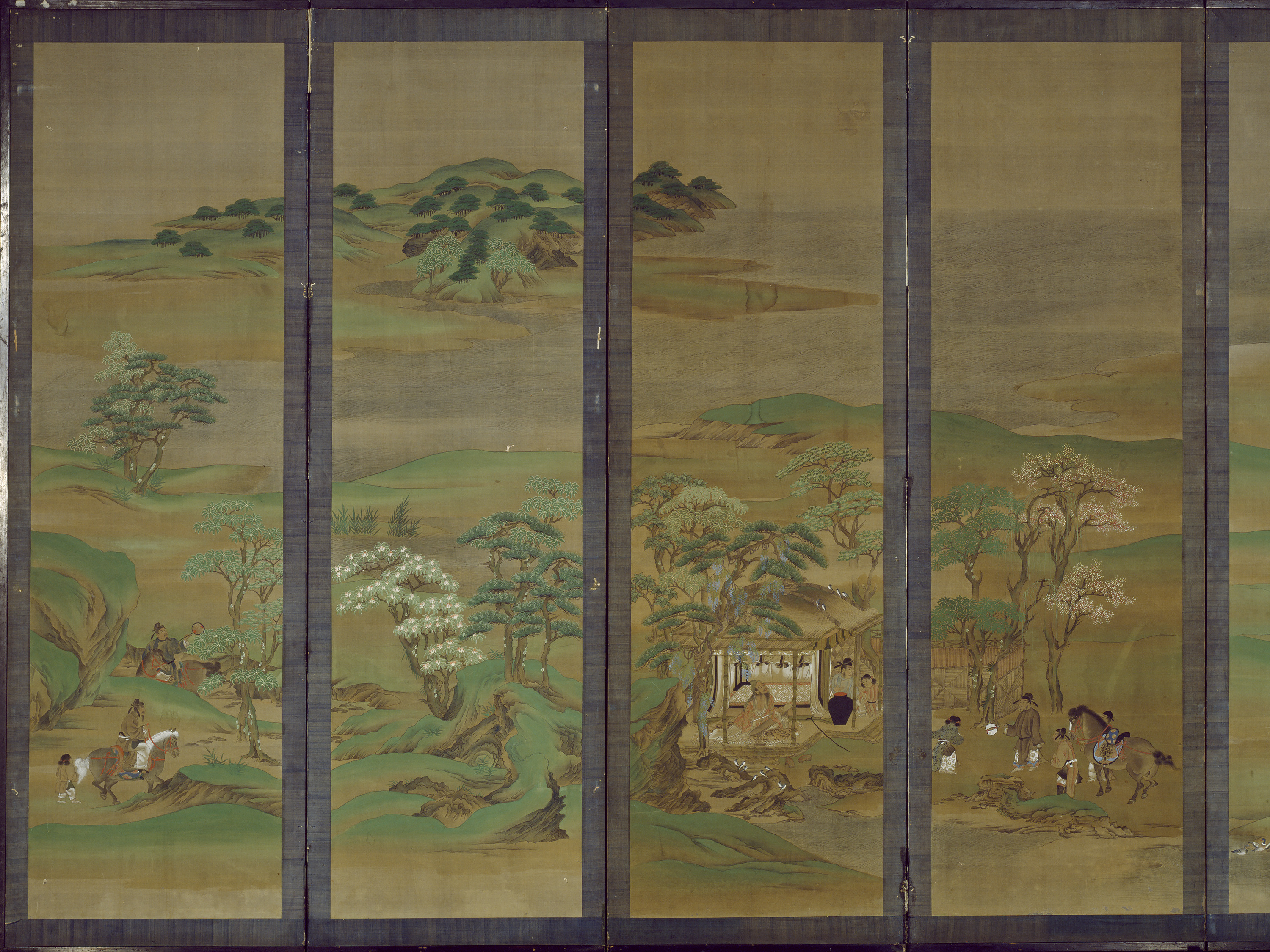
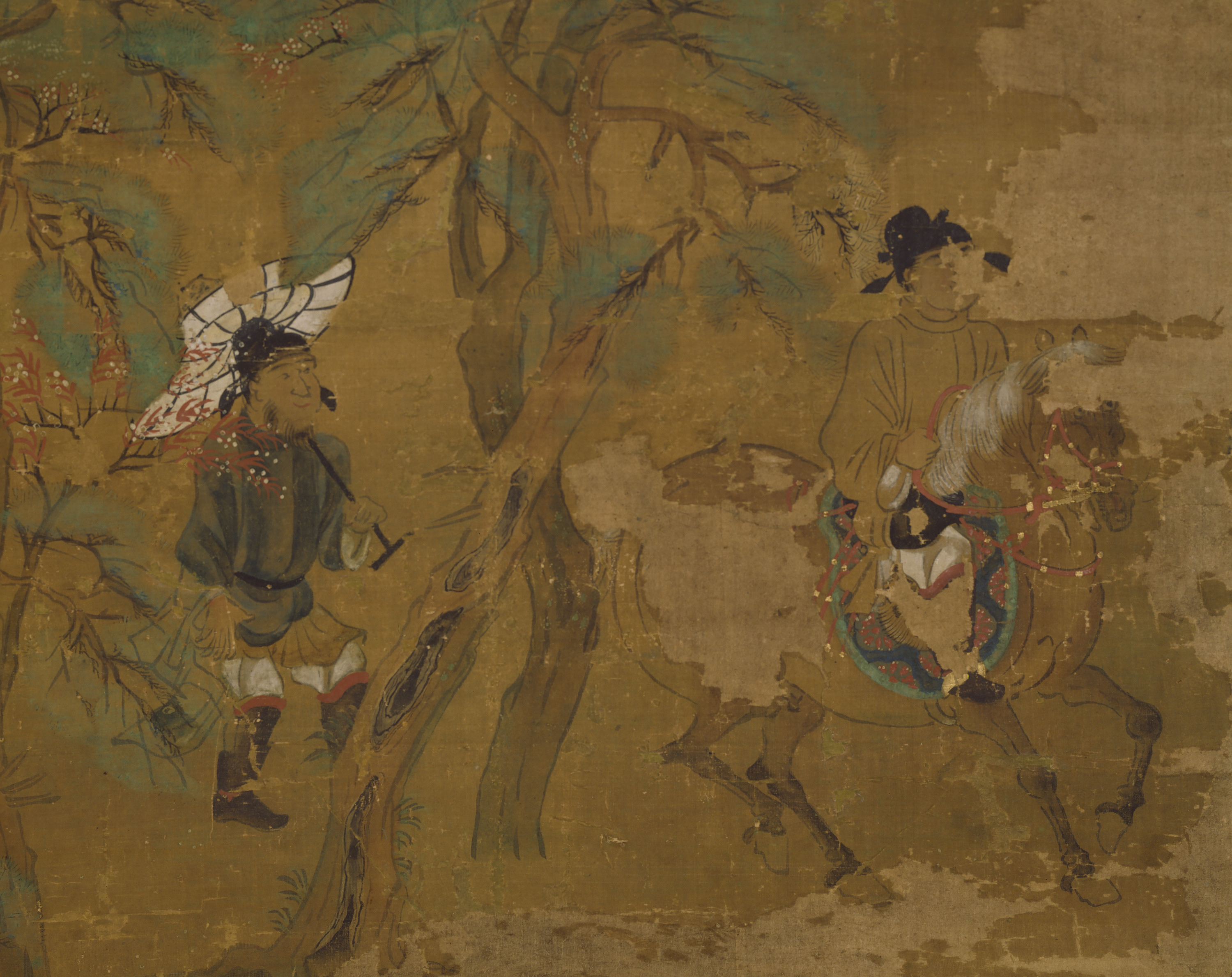



Senzui Byobu is a type of landscape painting used in ordination ceremonies of the Shingon sect of Esoteric Buddhism. Such screens seem to have been adapted from those used in the residences of Heian nobility.
The screen depicts an open landscape with a gray-bearded hermit composing poetry in his hut. He is about to be visited by a young nobleman and his attendants. The old poet is thought to be Bai Juyi, a well-known Chinese poet of the Tang Dynasty.
The Chinese-style figures in this senzui-byobu are a rare example of kara-e, the Chinese-style painting popular during the Heian Period. The mild and emotive aspects of the figures, mountains, water, trees and rocks, however, reveal the trend towards Japanization in late-Heian-Period painting.
Japan-Heian-Late
This folding screen, which originally belonged to Tō-ji, the renowned monastery of the Shingon sect, was used in the esoteric Buddhist initiation ritual, kanjō. Formerly used by courtiers as decorative interior furnishings, such screens were converted for ritual use to provide a dignified ambience in this Buddhist ceremony. As the initiation ritual became popularly observed in the twelfth century, the form of the ceremony as well as the motifs of the screens gradually came to be formalized. The painting here, thought to date to the latter half of the eleventh century, is the oldest extant screen of this type and exemplifies an interior furnishing from the period of imperial rule in Japan.
Although the theme is unclear, the motif is of Chinese origin, making the work a Chinese style painting (kara-e in Japanese). The depicted style also comes from China, from the Tang dynasty, though the work here lacks the severity of Chinese paintings. According to Masakane kyō ki, the journal of Lord Fujiwara no Masakane (1079-1143), the late-ninth-century court painter Kanaoka of the Kose school painted as many as fifteen mountains, while the early eleventh-century artist Hirotaka depicted five or six, indicating that rendering mountains repetitively in a single scene no longer prevailed in Hitotaka's time. The present painting can be understood to follow this latter trend, The refined, gentle style here reflects the "Japanese cultural" nature of this work.
解説時名称:Landscape Screen (Senzui Byobu)
Heian period, 11th, Six-panel folding screen